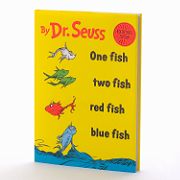
He got up while it was still dark, shoveled some breakfast into his weary body and finally headed out the door to start another day. The morning carpool was late again, so he waited in the driveway, hands in pockets and eyes closed. The prospect of the day ahead made his head hurt. Monotony, frustration and the unavoidable argument with his partner were all he had to look forward to. Finally his ride skidded into the driveway and he barely shut the car door before it sped away.
He looked out the back window in time to see his mother waving goodbye.
In many ways a child’s school day is no different than their parents’ work day. Some waddle into the school with apprehension and angst, while others hurry to their seats with expectancy and excitement. You can tell by the eyes. Deer caught in headlights or wisdom of the ages owl eyes. Look in the mirror – what do your eyes tell the rest of the world about your job?
The day inches forward and they watch the clock. By 11:00 a.m. stomachs growl and eyes begin to glaze over. Some kids look for any excuse to get up and move around. Pencils could use sharpening. Water fountains entice (even if the water is warm and smells a little weird). Restroom passes are highly coveted, but as a last resort any kid will volunteer to run an errand for the teacher – anything to get up and get going.
Who can blame them? There’s very little wiggle room in a classroom. Squirming can be construed as a symptom of ADHD, and getting up out of your seat without permission is a punishable offense. Outside time either in the form of physical education or recess has been cut dramatically. In fact, 40 percent of the nation’s elementary schools have either dropped or reduced recess in favor of extra classroom time.
Prisoners and even caged dogs at the Humane Society get more breaks than kids in school!
Those who oppose down time at school argue that the more time kids spend in their seats in the classroom, the more they will learn. In this age of school reform and shrinking budgets, some school districts have made some controversial choices. Boston’s superintendent, Nadine Binkley, defends her cut of recess, “I’ve been at this job for a year, and I was hired with a mandate to improve academic achievement. Research tells us this is the way to increase student achievement.”
But early childhood development research disagrees. Olga Jarrett, child development specialist at Georgia State University, says, “A teacher who conducts an entire day without one short recess misunderstands how children learn.”
So it’s a misunderstanding?
Let’s see.
Children have shorter attention spans than adults and yet they get less breaks during the day than adults do in the workplace. Maybe they need their own union.
Public health officials warn that youngsters are too sedentary, but we’ve slashed the physical education programs’ budgets. Many adults are dangerously overweight, so risk management directors create wellness programs to include exercise while on the job. Sure. . . that makes perfect sense.
One might argue that children are in school to learn, not play. So does that mean that adults are at their jobs to work, not play? Can you imagine taking your lunch break at work and someone unseen turns off the lights and yells at you with a bullhorn to put your head down and keep quiet? That happens in schools every day.
No matter whether it’s a misunderstanding or just poor decision making, we all need at least scheduled breaks, physical activity and unstructured play time in order to be productive.
Rebecca Lamphere, a Virginia Beach mom, said it best, “We aren’t raising computers. These are living, breathing bodies.”
Bodies and minds are meant to be in motion. We can advocate for our children’s wellness in school. After all, we’re the only union rep they’ve got!
Copyright 2005 Vicki Caruana. All Rights Reserved.
 One of the ways parents fill in the gaps of a "less than expected" education for their children is to find outside activities, lessons, trips, and recreational pursuits to take up the time that might have been spent on learning in school. If school is too easy, homework is scarce and time spent at home ends up being spent in front of a television or computer screen.
One of the ways parents fill in the gaps of a "less than expected" education for their children is to find outside activities, lessons, trips, and recreational pursuits to take up the time that might have been spent on learning in school. If school is too easy, homework is scarce and time spent at home ends up being spent in front of a television or computer screen.



